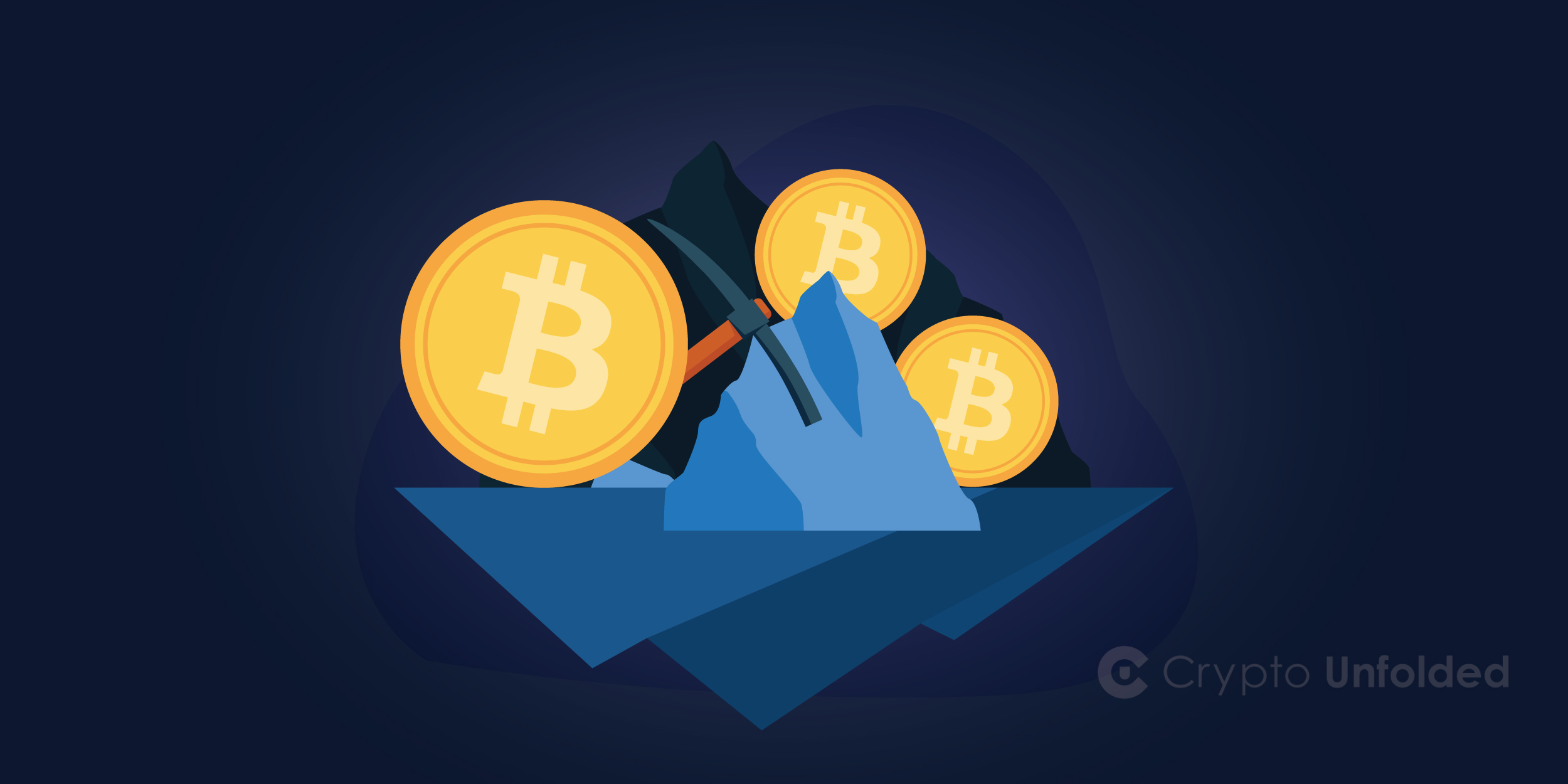
If you have ever wondered what Bitcoin mining difficulty is and how it works, you have come to the right place! This short guide on one of the fundamental components of the Bitcoin protocol should clear the air for you. In the end, you should be able to set up the difficulty on your mining […]
If you have ever wondered what Bitcoin mining difficulty is and how it works, you have come to the right place! This short guide on one of the fundamental components of the Bitcoin protocol should clear the air for you. In the end, you should be able to set up the difficulty on your mining machine and use the Nakamoto consensus in your favor.
The Definition of Bitcoin Mining Difficulty
The BTC mining difficulty is a relative measure that shows how difficult it is to mine a new Bitcoin block and add it to the blockchain. Alternatively, it tells a miner how difficult it is to find a hash below a certain target.
The higher the mining difficulty is the more energy and computing power will be necessary to mine the same number of blocks. The main benefit of high mining difficulty is the increase in security for the network.
The total estimated mining power in the Total Hash Rate is the primary regulator of Bitcoin mining difficulty. To maintain an average of 10 minutes between block creations, the difficulty is readjusted every 2016 blocks, which is more or less 14 days.
Why Bitcoin Mining Difficulty Increases
BTC mining difficulty is not linear. It oscillates depending on how easy miners manage to produce valid blocks. If it becomes too difficult for miners to mine the mining difficulty increases, and vice-versa.
A fundamental part of the Bitcoin protocol is that new BTC should enter the circulating supply every 10 minutes. This feat is possible by ensuring a balance between network difficulty and the miners’ power to find a hash below the target. As a result, the chain receives new, valid blocks, and the network does not lose its integrity.
Another reason for why the mining difficulty will change is the overall security of the network. The hashrate determines how powerful the miners are on a specific network. A high hashrate reveals an active group of miners and a highly-secure, high-speed network. A low hashrate determines that a network is at the opposite side of this spectrum.
Both types of networks have to maintain their hashrate in balance to produce new blocks consistently. If the hashrate is too high, the Bitcoin mining difficulty will become too high for them to mine a block in the necessary time to meet protocol demands.
After the recent halving, Bitcoin difficulty dropped, which made it easier for miners to mine for new blocks consistently.
The biggest drop in mining difficulty took place at the end of March 2020 when the network difficulty fell by 16% from 16.55 trillion to 13.9 trillion. The massive decrease was the result of a sudden crash of the Bitcoin price, which led to many of the users stopping their mining.
You can get the current Bitcoin mining difficulty here.
What is the Formula for BTC Mining Difficulty?
To keep in line with the Bitcoin protocol, the mining difficulty readjusts after every 2016 blocks. There is a simple formula for calculating mining difficulty on a network, and that is:
difficulty = difficulty_1_target / current_target
Now, let’s break it down:
“target” is a 256-bit number, which is a custom floating-point type with restricted preciseness. Bitcoin users can approximate difficulty on its value, which is also known as “bdiff.”
“difficulty_1_target” is also known as pool difficulty, or “pdiff,” and it represents a hash where the leading 32 bits are zero and the rest are 1. This hash differs according to the setting that you pick to measure difficulty.
Every block on the chain keeps a record of the Bitcoin mining difficulty under the name of “Bits.” This record is a target that you will generally find as 0x1b0404cb (stored in little-endian order: cb 04 04 1b).
By using a preset formula, each block on the chain calculates the target value. Considering the target above, we can determine the following elements of Bitcoin mining difficulty:
- The hexadecimal target:
0x0404cb * 2**(8*(0x1b – 3)) = 0x00000000000404CB000000000000000000000000000000000000000000000000
The highest possible target (difficulty_1_target) is defined as 0x1d00ffff or, in hex form:
0x00ffff * 2**(8*(0x1d – 3)) = 0x00000000FFFF0000000000000000000000000000000000000000000000000000
- The bdiff and pdiff values:
We already know from the information above that the current_target is 0x1b0404cb or 0x00000000000404CB000000000000000000000000000000000000000000000000.
As per the standard formula, the current mining difficulty is:
0x00000000FFFF0000000000000000000000000000000000000000000000000000 /
0x00000000000404CB000000000000000000000000000000000000000000000000
= 16307.420938523983
Therefore, bdiff is 16307.420938523983.
Now, let’s calculate the pdiff. Mining pools tend to use non-truncated targets which establish
difficulty_1_target at 0x00000000FFFFFFFFFFFFFFFFFFFFFFFFFFFFFFFFFFFFFFFFFFFFFFFFFFFFFFFF.
If this scenario, for the same current_target, the pdiff value is:
0x00000000FFFFFFFFFFFFFFFFFFFFFFFFFFFFFFFFFFFFFFFFFFFFFFFFFFFFFFFF /
0x00000000000404CB000000000000000000000000000000000000000000000000
= 16307.669773817162
This example from Bitcoin Wiki shows how Bitcoin calculates difficulty:
#include <iostream>
#include <cmath>
inline float fast_log(float val)
{
int * const exp_ptr = reinterpret_cast <int *>(&val);
int x = *exp_ptr;
const int log_2 = ((x >> 23) & 255) – 128;
x &= ~(255 << 23);
x += 127 << 23;
*exp_ptr = x;
val = ((-1.0f/3) * val + 2) * val – 2.0f/3;
return ((val + log_2) * 0.69314718f);
}
float difficulty(unsigned int bits)
{
static double max_body = fast_log(0x00ffff), scaland = fast_log(256);
return exp(max_body – fast_log(bits & 0x00ffffff) + scaland * (0x1d – ((bits & 0xff000000) >> 24)));
}
int main()
{
std::cout << difficulty(0x1b0404cb) << std::endl;
return 0;
}
How to Set Up the Difficulty for Your Mining Pool
Mining pools are generally a cluster of ASIC machines, which are supercomputers that can calculate and deliver numerous tetrahashes per second. For the mining process to run at a consistently high speed, they do not stop to check every hash that they produce.
Instead, they use a mechanism called “Share Time,” which is a preset period, usually in seconds, after which miners submit their shares to the pool.
For example, if you have set a Share Time of 7 seconds for your Bitcoin mining pool, each miner in your pool will have to submit a share to them every 7 seconds.
You can adjust the mining difficulty for your mining pool like this:
- Set a Share Difficulty target for every miner in your pool
(The Share Difficulty is directly proportional with each miner’s hashrate)
- Miners will set up their equipment to produce a myriad of hashes
- Once miners discover a hash that corresponds to the Share Difficulty target, they will send the hash to the pool
Here’s a simple example of how that will work for you if you join a mining pool:
- Let’s consider that your ASIC machine has an individual hashrate of 50 TH/s.
- The mining pool has set your Share Difficulty target at 2,000,000.
- The moment that you get shares above 2,000,000, you receive a reward from the pool
- The mining pool may adjust your difficulty to ensure that you do not deliver shares too fast
The Share Difficulty target for your mining machine will increase every time you enhance your hashrate by adding new, and better mining equipment. The rate at which you will send the shares will remain the same. However, you will receive a higher reward that will be directly proportional to the upgrade in hashrate that you have made.
The mining pool will always try to avoid setting the difficulty too high to avoid a substantial number of stale shares. Nevertheless, it will always encourage mining at a high difficulty on fast-running hardware to reduce network load across the network.
Remember that as a miner, you will receive a reward from the pool according to the “Pay-Per-Share” (PPS) formula. It means that the value of your reward will depend on the number of shares that you submit, and on how difficult it was to find them.
What is the Nakamoto Consensus and how does it Work?
You will get a better grasp of how important Bitcoin mining difficulty is once you understand how the Nakamoto Consensus works.
Bitcoin is not the first attempt at creating a feasible, decentralized cryptocurrency. Many other projects have tried to produce a form of digital currency before BTC, but they failed to overcome the double-spending problem.
Double spending is an error that enables users to spend a Bitcoin more than once. This problem would not be possible in real life where you couldn’t purchase two different $5 products with the same $5 bill.
However, when it comes to digital money, the files of a digital coin are prone to duplication and subsequently to double-spending.
The main consequences of double-spending are inflation and an irremediable loss in value and trust.
How the Nakamoto Consensus works
Bitcoin’s founder(s), Satoshi Nakamoto came up with a solution to the double-spending problem that we today call the Nakamoto Consensus.
This consensus protocol ensures network integrity, trust, and transparency. Furthermore, it enables the adoption of any form of governance.
The Nakamoto Consensus asks each potential participant in the chain to pay a price if they want to become part of the network. This price is Proof-of-Work (PoW), and it represents the work that miners put into mining Bitcoin. The work itself is the computational energy that their ASIC machines consume in the process.
The PoW algorithm allows the participants on the network to trace every single Bitcoin right to its very source. Therefore, every BTC stamp is unique and almost impossible to duplicate and double-spend.
The only dystopian scenario in which a user would hijack the blockchain by forking out and try to double-spend all the Bitcoins is nearly unattainable. That user would have to put in so much energy that the result would be economically unfeasible.
The Bottom Line
Bitcoin mining difficulty is the feature that makes BTC mining both cumbersome and rewarding enough to keep the mining going. It also enhances security and transparency on the network, thus solving the double-spending problem.
The Bitcoin protocol would not function without fundamental mechanisms like mining difficulty. It is due to such innovations that Bitcoin managed to pick off as an innovative payment network without trust issues.









